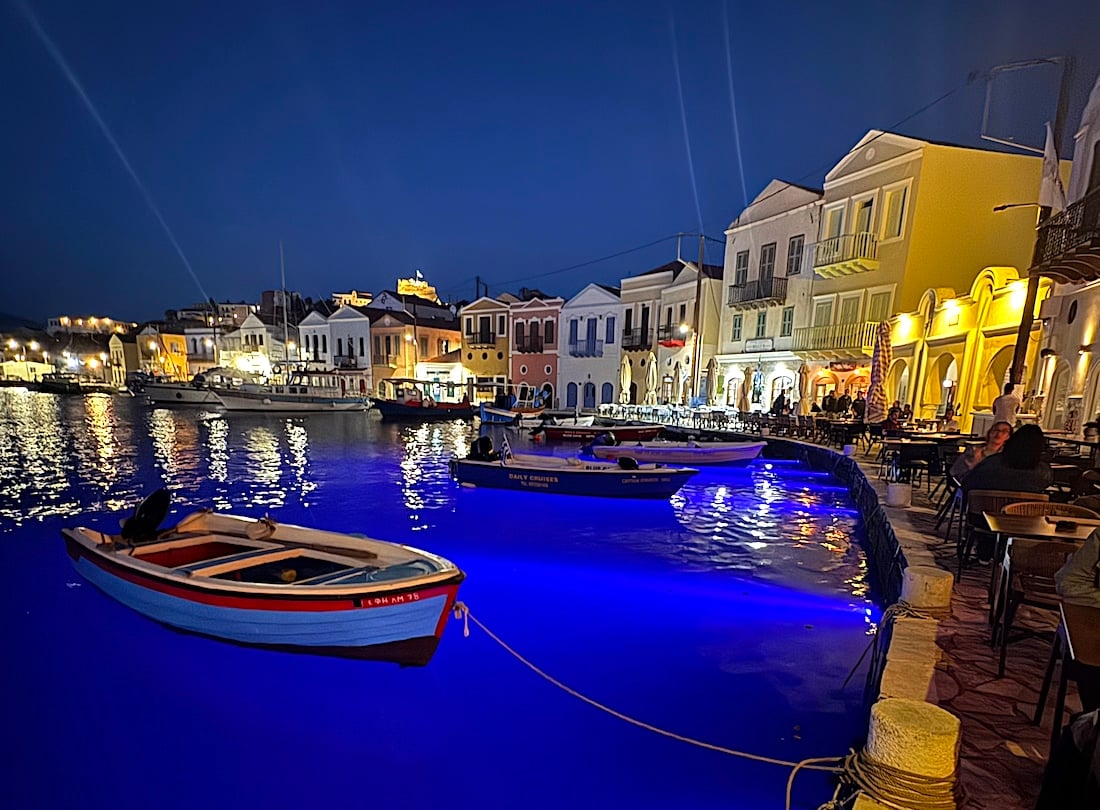

Kastellorizo, the far-flung, tiny island of Greece on the easternmost edge of the Aegean Sea, may lack in size but it makes up for this with its unparalleled serene beauty, natural wonders, and crystal-clear waters.
Only one and a half mile from the Turkish coast, in recent years, Kastellorizo—or Megisti, as it’s been known since antiquity—has become a top getaway spot for the summer months, when the island truly bursts to life.
“There are 495 permanent residents,” Stratos Amygdalos, Kastellorizo’s Deputy Mayor for Cultural Affairs tells Greek Reporter. “Over 90 percent of them are in the tourism business, as the island evolves into a prime tourist destination, where visitors can feel the hospitality of locals and relax on a very quiet island.”

Despite its remote location, this distant island of Europe boasts a deep and layered history, shaped by successive waves of conquerors—Romans, Byzantines, Knights of St. John, Ottomans, Italians—and by the resilience of its own people.
The island’s name, derived from the medieval “Castello Rosso,” meaning “Red Castle,” refers to the reddish rock on which the Knights of St. John built their fortress in the 14th century. Today, the remains of that castle still crown the hill above the harbor, keeping silent watch over the colorful neoclassical houses that line the waterfront below.
Kastellorizo is also home to a natural wonder that remains one of Greece’s best-kept secrets: the Blue Cave. Also referred to as the “Blue Grotto” or “Fokiali,” this sea cave is a breathtaking geological formation with a dazzling spectacle of light, color, and stillness.
The Blue Cave is only accessible by sea, and getting there is an adventure in and of itself. Visitors can get there in small boats, often in the early morning when the sea is calm and the light is just right.

The 5.5-square-mile island gained instant fame after the Oscar-winning movie Mediterraneo was filmed there in 1991. Though it only has one sandy beach—Mandraki, situated on the scenic harbor with the same name—the waters are so clear that Kastellorizo is probably the only Greek island where you can dive and swim from any point.
“Most of the tourists visiting Kastellorizo are from the European Union, Italy, Spain, England and a big part are also from the Greek diaspora, from Australia, the United States and other countries,” Amygdalos says. “These Greeks return to see Kastellorizo, to rebuild their houses and attend the weddings of their children and other relatives. We also welcome visitors from the Turkish side, which is daily tourism. They arrive at 10 in the morning and leave at four in the afternoon, also contributing to the economy of the island.”
Despite the differences between the two countries, the people, who live just a few miles apart in this corner of the Aegean, co-exist peacefully and respect each other, while each summer, the two communities organize a festival for culture and the arts together. Last year, according to the municipality of Kastellorizo, 50,000 people visited the island from the Turkish coast.

Though visitors in the summer effortlessly immerse in Kastellorizo’s timeless beauty, serene atmosphere, local dishes, and rich history, its few hundred permanent residents endure a harsh reality during the winter.
The island’s mayor, Nikos Asvestis, says the main problem is the lack of personnel on the island—from garbage collectors to, most importantly, doctors.

In the winter, ferry connections between Kastellorizo and the nearest larger island of Rhodes is spotty and, as locals tell Greek Reporter, many of them are forced to seek medical care on the other side of the Aegean in Turkey. Inclement weather also hits the island during the winter, halting plane and ferry traffic alike. Meanwhile, Greek military helicopters are occasionally summoned to transfer patients off the island.
“The Greek state doesn’t look after us,” says Giannis Nitis, a 65-year-old fisherman and Kastellorizo native.
“It’s now difficult to survive in this place through fishing,” he says. The few fishermen left on the island, Nitis adds, are turned away by Turkish Coast Guard boats, after being told that they have entered Turkey’s territorial waters.

“We, old fishermen, now don’t know where the limits are and we get confused. And the species that we had, like octopus, red snapper have all vanished. All there is is the Symi shrimp (a variety of tiny shrimp that inhabit the sea around the nearby Symi island). If this vanishes too, all fishing boats will remain at the port,” Nitis says.
Still, Kastellorizo, which has also endured many battles and much strife throughout its long history, remains a unique, peaceful escape in the Mediterranean. “Our island has a very long history, I’d say it’s a gem of the Mediterranean with clean seas, the Blue Cave and hospitality,” says the island’s Mayor. “Αnd it is a frontline island, which must be supported and visited.”
